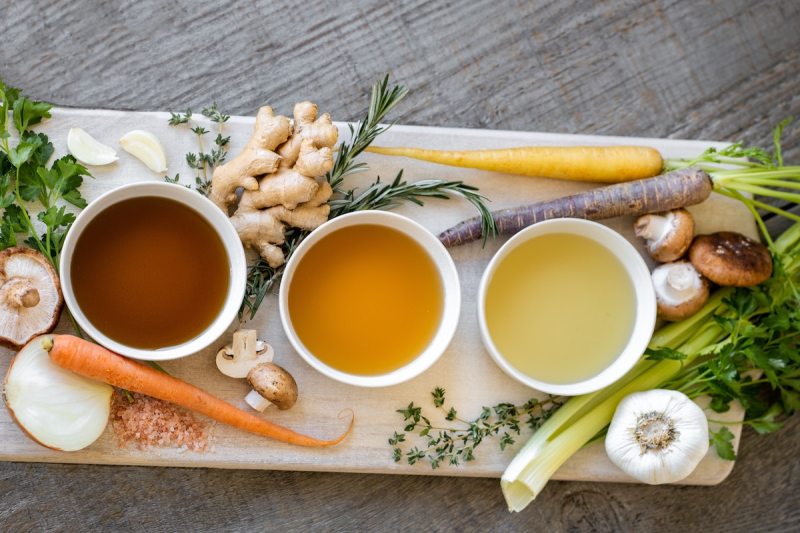
The focus on cleaner eating and healthier lifestyles is growing alongside the development of new and different trendy diets. Each of these diets claims to have life-changing benefits, from weight loss to detoxing and everything in between.
If you are familiar with the Paleo lifestyle, then you’ll also be familiar with bone broth and intermittent fasting. Recently, a diet has emerged that blends these two popular elements into a plan that claims to take weight loss to a new level.

Facts about the bone broth diet
Bone broth can be found in many products, including protein powders and collagen snacks. But is it really possible to sip your way to better health? Here we dig into the facts behind the bone broth diet so that you can decide for yourself if it’s the right option for your health journey.
What is the bone broth diet?
The Bone Broth Diet is a 21-day weight loss plan that combines a low-carb, Paleo diet with intermittent fasting created by naturopathic doctor Kellyann Petrucci.
By incorporating the gut health benefits of Paleo eating with the metabolism-boosting effects of intermittent fasting and the collagen-rich nutrients of bone broth in a distinct system, Dr. Petrucci claims the diet will help you “lose up to 15 pounds, 4 inches, and your wrinkles — in just 21 days.”
How does it work?
The bone broth diet is a 21-day plan consisting of five days of eating only Paleo foods followed by two days of fasting and consuming a large amount of bone broth each day.
The meal plan for the five Paleo days consists of low-carb, Paleo foods — meat, fish, poultry, eggs, non-starchy vegetables, and healthy fats — and one to three cups of bone broth. On the two fasting days, you are to consume only three to six cups of bone broth.
What is bone broth, and what are its benefits?
Bone broth is made by simmering animal bones to release minerals, collagen, and amino acids. Bone broth provides whole-food-based type II collagen and gelatin, which are known for enhancing the appearance of skin and that also support digestive health.
Collagen also contains the amino acids glucosamine, proline, and glycine, which promote joint health, while maintaining lean muscle mass. Bone Broth is also a source of protein and essential amino acids and minerals — which are lacking in many diets today.
Are there cons to this diet?
While bone broth itself has some potential benefits, as listed above, the bone broth diet may have some downsides to consider if you’re thinking about following this diet. One thing to consider is the restrictive nature of the diet, which can lead to deficiencies in essential nutrients like fiber, calcium, vitamins, and certain essential fats. Also, broth can trigger digestive problems like bloating, constipation, and nausea in some people, especially those with sensitive stomachs or existing gut conditions.
The diet can be difficult to maintain long-term because of its restricted nature and lack of variety. This can lead to yo-yo dieting and unhealthy eating patterns in the long run. It’s also important to note that this diet isn’t suitable for everyone, especially people with certain medical conditions or those taking certain medications.
Bone broth diet results
While there are no published research results to support the bone broths diet claims, the adoption of lifestyle changes such as low-carb, Paleo diet, and intermittent fasting has been linked to positive health changes. Still, it’s not a long-term solution, and other lifestyle changes — such as eating more fruits and vegetables, practicing portion control, and getting regular exercise — can be a more sustainable way to lose weight. As with any dietary change, it’s important to check with your doctor or licensed healthcare practitioner before making any change to your diet.
Editors' Recommendations
- Black tea vs. green tea: Which offers more benefits?
- Our 5 favorite vodka drinks, ranked
- The Whole30 diet: Everything you need to know
- These are the healthiest vegetables you need to start eating now
- The important health benefits of magnesium you need to know about




